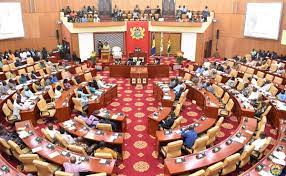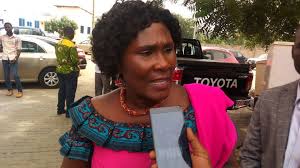Bad Debt Reserves Financial Definition Of Bad Debt Reserves
Content
If the company is new and lacks experience, it may calculate its bad debts expense by using an industry average. The allowance for doubtful accounts is also called bad debt allowance and allowance for bad debt. The allowance for doubtful accounts is then used to approximate the percentage of “uncollectible” accounts receivable (A/R).
Assuming that credit is not a significant component of its sales, these sellers can also use the direct write-off method. The companies that qualify for this exemption, however, are typically small and not major participants in the credit market. Thus, virtually all of the remaining bad debt expense material discussed here will be based on an allowance method that uses accrual accounting, the matching principle, and the revenue recognition rules under GAAP. You track bad debts on the balance sheet as well, using the bad debt reserve account, also known as an allowance for bad debt.
How To Estimate Bad Debt Expense
When you create an allowance for doubtful accounts entry, you are estimating that some customers won’t pay you the money they owe. The allowance for https://accountingcoaching.online/ is a contra-asset that is recorded in the asset section of the balance sheet. The company must roll forward the reserve each year to make sure the reserve is adequate. To increase the reserve, the company would record additional bad debt expense. When the company writes-off a receivable, it decreases the allowance reserve.
The the amount that a company keeps as bad debt reserve is determined by the company’s management and the nature of the industry. At the end of the year, the company identifies that one of its customer to whom sales made $ 30 million has not paid its bill even after 60 days have crossed. After analysis, the company received information that the said customer is facing losses for the last 2 years back & now the customer is running into a cash crunch as well.
Bad Debt And Financial Statements
For example, if the company wanted the deduction for the write-off in 2018, it might claim that it was actually uncollectible in 2018, instead of in 2019. Suppose a company generated $1 million of credit sales in Year 1 but projects that 5% of those sales are very likely to be uncollectible based on historical experience.
- If a customer purchases from you but does not pay right away, you must increase your Accounts Receivable account to show the money that is owed to your business.
- This entry assumes a zero balance in Allowance for Doubtful Accounts from the prior period.
- A percentage of sales or historical average can also be used to estimate a bad debt expense in a company.
- For example, a company seeking to increase market share may loosen its credit scoring criteria and increase credit availability, yet recognize that higher loss reserves are required for these new, higher risk customers.
- This lag can throw off a company’s accounts receivable numbers on a balance sheet.
- In addition, the company should re-examine how it manages credit extended to customers.
The amount of the bad debt is offset by a credit memo for the unpaid account, debiting the bad debt expense account and crediting the accounts receivable account. A bad debt reserve is a contra account, which is designed to offset the receivables account with which it is paired. The receivables account has a natural debit balance, while the bad debt reserve has a natural credit balance. The result is a net receivable balance reported in the balance sheet. For example, a balance sheet may reveal $1,000,000 of accounts receivable, against which is offset $50,000 of bad debt reserve. The reason it is known as a contra-asset account since it has a credit balance, unlike other asset accounts that appear on the balance sheet and have debit balances. If a customer never pays you, the unpaid payments become bad debts.
Ready To Protect & Grow Your Business?
However, your customer disputes the quality of your service and will only pay $9,500. You adjust your balance sheet by reducing the $10,000 accounts receivable to $9,500. In accordance with GAAP revenue recognition policies, the company must still record credit sales (i.e. not cash) as revenue on the income statement and accounts receivable on the balance sheet. Balance Sheet Of The Company)A balance sheet is one of the financial statements of a company that presents the shareholders’ equity, liabilities, and assets of the company at a specific point in time. It is based on the accounting equation that states that the sum of the total liabilities and the owner’s capital equals the total assets of the company. Allowances for doubtful accounts are an important tool to help cover inevitable dummy non-payments. However, increasing or frequently changing bad debt reserves may point to problems with a company’s financial health and creditor behavior.
Divide the amount of bad debt by the total accounts receivable for a period, and multiply by 100. Bad debt expense is something that must be recorded and accounted for every time a company prepares its financial statements.
Related To Bad Debts Reserve
This means that the allowance for doubtful accounts will offset some of the value of the receivables account, resulting in a net receivable balance which will be listed on the balance sheet. This is a contra asset account, which means that it is used to offset the value of another account, in this case, accounts receivable. The bad debt reserve allows the company or bank to state the face value of its receivables or loans. An allowance for your bad debt expense is crucial to keep your business running smoothly. You need to provide proof like call/email records proving that you tried to call the customer or provide easier repayment terms. When the IRS is convinced regarding your bad debt expense, you are authorized to write off the debt.
With this method, you can group your outstanding accounts receivable by age (e.g., under 30 days old) and assign a percentage on how much will be collected. Use the accrual accounting method if you extend credit to customers. If a customer purchases from you but does not pay right away, you must increase your Accounts Receivable account to show the money that is owed to your business. A debt is closely related to your trade or business if your primary motive for incurring the debt is business related. You can deduct it on Schedule C , Profit or Loss From Business or on your applicable business income tax return. The following table reflects how the relationship would be reflected in the current (short-term) section of the company’s Balance Sheet.
Writing Off Bad Debt Expense
Generally, to deduct a bad debt, you must have previously included the amount in your income or loaned out your cash. If you’re a cash method Bad debt reserve taxpayer , you generally can’t take a bad debt deduction for unpaid salaries, wages, rents, fees, interests, dividends, and similar items.
- Harold Averkamp has worked as a university accounting instructor, accountant, and consultant for more than 25 years.
- For companies with international receivables, different loss percentages are typically tracked and applied for each country of origin.
- Tax TipsA Beginner’s Guide to Record-Keeping for Small Businesses Get an overview of all the different records and receipts you have to maintain as a small business owner and how to manage them efficiently.
- Accounts ReceivablesAccounts receivables is the money owed to a business by clients for which the business has given services or delivered a product but has not yet collected payment.
To reverse the account, debit your Accounts Receivable account and credit your Allowance for Doubtful Accounts for the amount paid. Its accounting history demonstrates that on an average about 3% of its total AR ends up being uncollectable. This particular method impacts the Income Statement since it influences the reduction in sales figure of a business.
Federal Reserve Holds, For Now
In some cases, you may write off the money a customer owed you in your books only for them to come back and pay you. If a customer ends up paying (e.g., a collection agency collects their payment) and you have already written off the money they owed, you need to reverse the account.
Your industry’s experience is instructive to make sure you are forecasting the right trend. Check public company competitors’ 10Ks to see how they are estimating their bad debt allowances and see bad debt trends.
What Can I Do To Prevent This In The Future?
On the bright side, this activity might also help recover some long-pending debts by constant follow-up. Thus, actual bad debts do not impact the company’s profits until the actual bad debt amount is within the accumulated balance of provision for bad & doubtful debts.
Try an allowance of a percentage by aging bucket as you analyze your receivables; i.e, 0.5% of the 30 day column 0.75% of the 60 day column, and so on. Your historical bad debt experience is a good starting point in evaluating up a general reserve to cover your typical Bad Debt Allowance needs. However, you can do a better job by also considering other factors – below.
Therefore, there is no guaranteed way to find a specific value of bad debt expense, which is why we estimate it within reasonable parameters. A bad debt reserve is normally put in place at your financial year end once you have taken the view that any outstanding payments by customers will not be paid in the new financial year. This procedure is to avoid overstating the trade debtors which are amongst the assets of your business. As a matter of fact, will companies with more than 1000 customers go on analysing each customer, as we did above? The management has experience with the recoverability ratio in the industry. Management can presume that 5% of credit sales are normally unrecoverable. This way, the bad debt reserve will go on increasing & accumulating.




